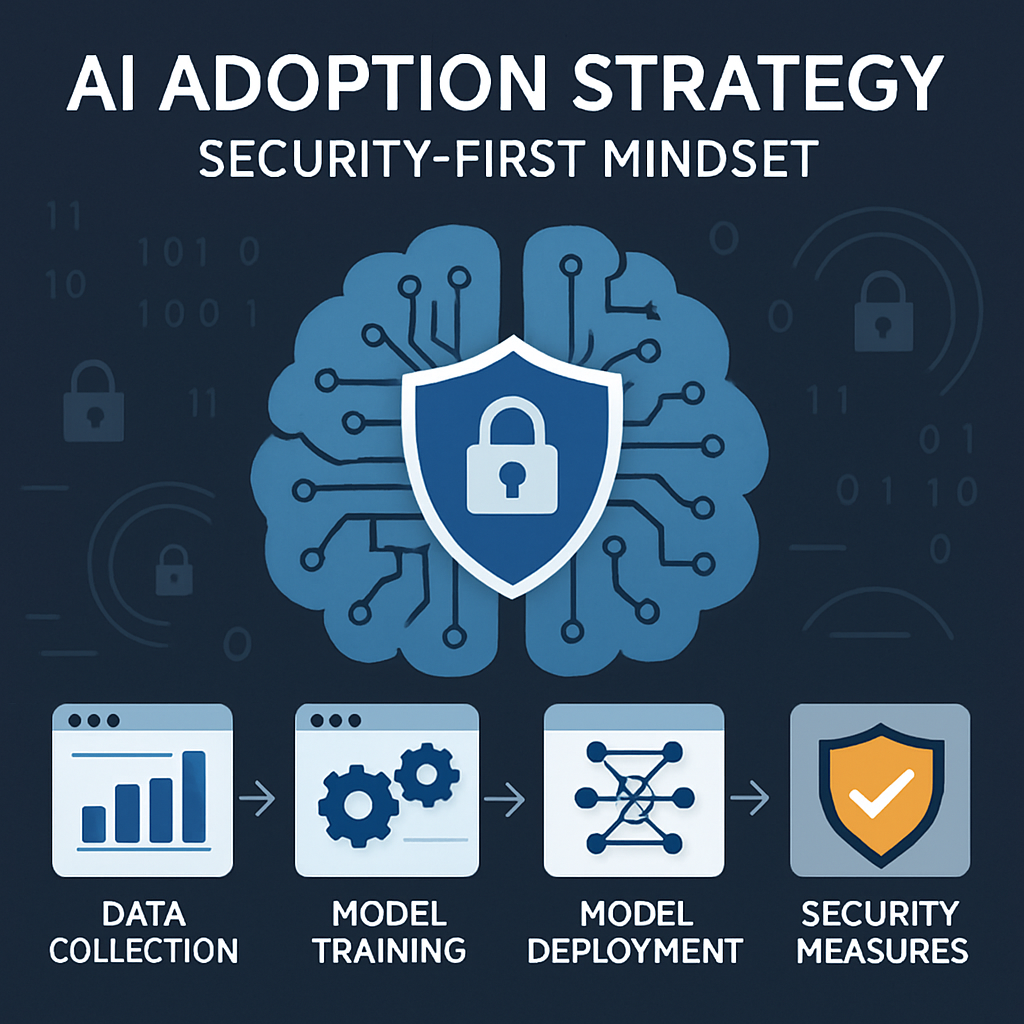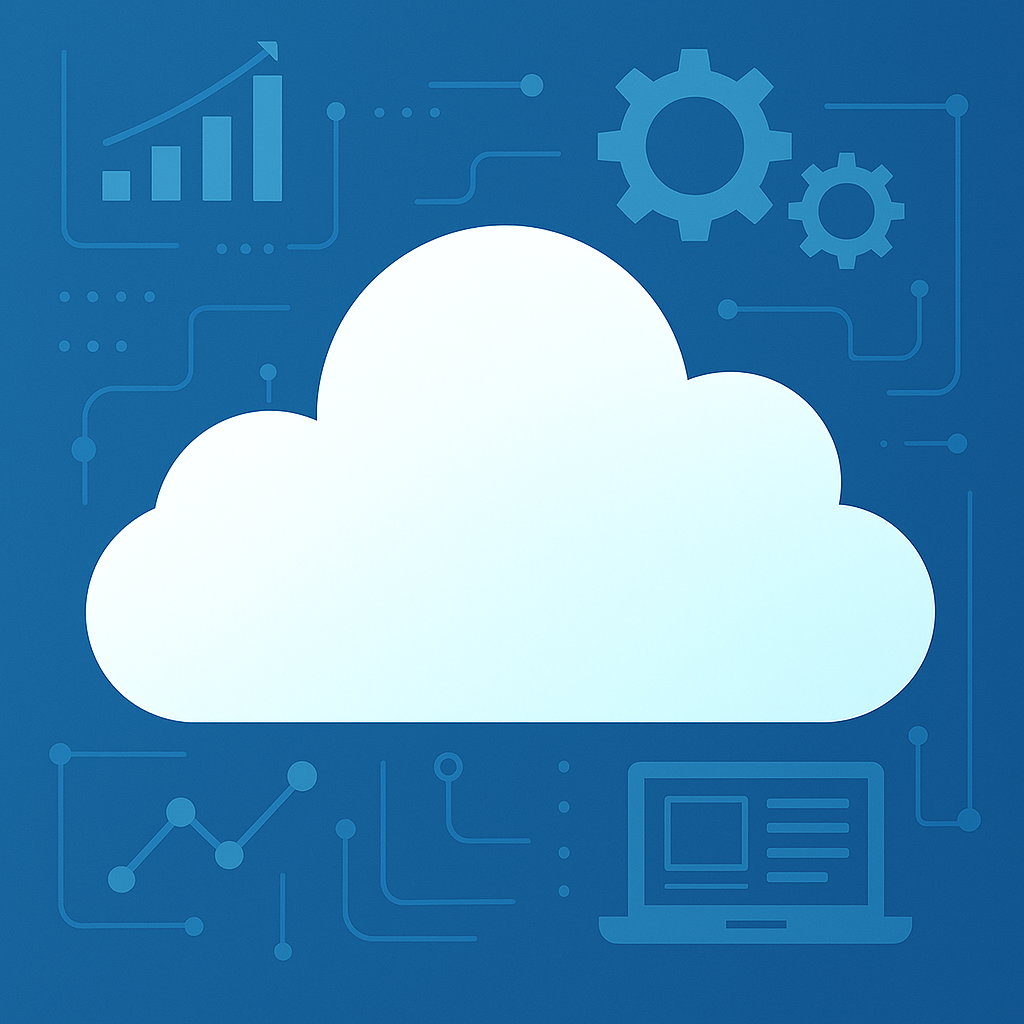
What Is Different About AI Cybersecurity?
Artificial Intelligence (AI) is transforming industries by automating tasks, making predictions, and delivering insights that were once unattainable. Businesses now rely on AI to optimize decision-making, streamline operations, and fuel innovation in fields ranging from healthcare diagnostics and financial services to smart manufacturing. Yet as adoption accelerates, organizations encounter an evolving set of cybersecurity challenges—challenges that require new strategies beyond traditional IT safeguards.
Unlike conventional software systems, which process static inputs and produce predictable outputs, AI is dynamic by design. It continuously learns, adapts, and evolves in response to new data and shifting business contexts. The very capabilities that make AI valuable—autonomous learning, large-scale data processing, and real-time adaptation—also create new opportunities for adversaries to exploit. Attackers can target the unique mechanics of AI models, undermining reliability, accuracy, and trust in AI-driven outcomes. This complexity demands a forward-looking approach to cybersecurity, often described as AI cybersecurity or secure AI practices.
AI cybersecurity focuses on protecting both the infrastructure and the unique elements of AI systems throughout their lifecycle: data collection and preprocessing, model training and validation, deployment, continuous learning, and ongoing monitoring. The objective is to ensure the integrity, confidentiality, and availability of AI models and the data they rely on, while maintaining transparency and accountability in how AI-driven decisions are made. Traditional security measures—focused on endpoints or perimeter defenses—fall short here. AI requires safeguards against a broader spectrum of attack vectors, including those that directly manipulate data pipelines, exploit the inner workings of machine learning models, or corrupt decision-making processes.
Defenders must be prepared for sophisticated tactics such as data poisoning, where attackers insert subtle malicious inputs into training datasets, skewing the model’s behavior in ways that are hard to detect. They must also guard against model inversion, in which adversaries use repeated queries to reconstruct sensitive information from an AI model’s outputs. Adversarial attacks present yet another challenge: finely crafted inputs that appear benign to humans but trick even highly accurate models into making flawed or misleading predictions.
As organizations integrate AI across critical operations, proactively addressing these risks becomes essential. Modern AI security strategies must go beyond conventional controls, incorporating data governance, secure software development practices, predictive analytics, ongoing threat modeling, layered monitoring, and adaptive defenses that evolve alongside the systems themselves. By elevating security standards to match AI’s unique operational realities, businesses can unlock transformative value from AI adoption while ensuring compliance, resilience, and customer trust in an increasingly complex digital environment.
Understanding Unique AI Security Risks
AI systems face an expanding set of risks that can compromise their reliability, safety, and business value. One of the most prominent is data poisoning—an attack in which adversaries intentionally manipulate or corrupt training datasets. These alterations are often subtle and difficult to detect during development, but once deployed, they can cause an AI model to generate inaccurate predictions, biased recommendations, or dangerous misclassifications. In sectors such as healthcare, finance, critical infrastructure, or autonomous vehicles, the consequences range from financial loss and operational disruption to risks to human safety.
A second concern is model inversion, where attackers leverage access to an AI system’s outputs to infer sensitive details about the underlying data or even individual users. For example, repeated queries to an AI-driven diagnostic model could allow an adversary to reconstruct protected health information—even when the raw data never leaves secure systems. This not only challenges existing privacy-preserving techniques but also raises compliance risks for organizations bound by regulations like HIPAA and GDPR.
Adversarial attacks represent another growing threat. In these cases, attackers craft inputs—images, text, audio, or sensor data—that are nearly indistinguishable from valid information but are specifically designed to mislead the model into misclassifying the input. The results can be severe: facial recognition systems granting unauthorized access, fraud detection platforms overlooking malicious activity, or industrial automation tools misinterpreting sensor data in ways that disrupt operations. These attacks are particularly alarming because they bypass many of the controls organizations use to secure traditional IT environments.
As AI adoption expands into domains such as robotics, autonomous vehicles, smart manufacturing, and critical infrastructure, the consequences of a successful attack grow even more severe. Subtle manipulations can create persistent backdoors, degrade system performance over time, or evade conventional monitoring entirely. These adaptive and complex threats underscore the need for a specialized approach to AI cybersecurity—one that integrates secure data pipelines, rigorous validation of training and inference workflows, continuous model monitoring, advanced anomaly detection, and rapid incident response capabilities.
In short, the attack surface for AI is broader and more dynamic than that of traditional IT systems. Security professionals must anticipate these emerging risks and build defenses that evolve as quickly as the technologies they protect. By doing so, organizations can embrace AI with confidence, resilience, and compliance, ensuring that innovation and trust go hand in hand.
how are orgAnizations using AI to enhance their security posture?
While AI introduces new risks, it also creates powerful opportunities to strengthen cybersecurity programs. Across industries, security leaders are finding that AI doesn’t just add another tool to the stack—it reshapes how defenses are built, how incidents are detected, and how risk is managed at scale.
In the Security Operations Center (SOC), AI copilots are transforming how analysts work. Instead of manually parsing endless logs, analysts can surface correlated insights in seconds and even initiate guided remediation. This shift reduces alert fatigue, accelerates investigations, and compresses detection and response times, allowing teams to operate with greater efficiency and precision.
Identity protection has also become more dynamic. By continuously scoring login attempts against behavioral signals—such as device type, location, and usage patterns—AI enables adaptive responses in real time. Organizations can trigger step-up authentication, limit access, or block risky sessions altogether. This risk-based approach significantly raises the bar against credential-stuffing and account-takeover attacks, which remain leading entry points for adversaries.
Email defense is another area where AI is closing gaps left by traditional tools. Instead of relying on static rules, AI models learn the unique communication patterns of an organization, flagging anomalies in tone, timing, or sender behavior. With this behavioral context, businesses can stop sophisticated phishing and business email compromise (BEC) attempts that bypass legacy filters.
Detection and response capabilities are also advancing. By correlating telemetry across endpoints, networks, cloud services, and SaaS applications, AI can connect seemingly harmless indicators into a clear picture of malicious activity. This early visibility into data exfiltration, lateral movement, or insider threats provides security teams with the lead time needed to contain attacks before they escalate.
AI is equally effective at prioritizing where teams should act first. Predictive models, such as those that estimate which vulnerabilities are most likely to be exploited in the wild, allow IT and security teams to focus remediation on the 1–2% of issues that matter most. In parallel, adaptive Data Loss Prevention (DLP) solutions analyze context around how files are accessed and shared—flagging anomalies such as an employee suddenly uploading large volumes of sensitive data to a personal drive. These measures protect critical assets without disrupting legitimate business activity.
Beyond these foundational use cases, organizations are applying AI in more targeted ways that directly impact resilience and business continuity. In financial services, AI-powered anomaly detection is reducing fraud investigation times by spotting irregular spending patterns within seconds, enabling institutions to stop fraudulent activity before losses multiply. In healthcare, AI-driven monitoring tools continuously flag unusual access attempts to sensitive patient records, ensuring compliance with HIPAA while maintaining trust with patients and partners. In manufacturing and industrial sectors, predictive monitoring of operational technology (OT) environments helps prevent costly downtime by detecting irregularities in sensor or control data that may indicate a cyberattack.
Another emerging use case is insider risk management. By establishing behavioral baselines—such as typical working hours, data access frequency, or device activity—AI can identify deviations that may signal insider threat or compromised accounts. This proactive capability strengthens defenses without adding unnecessary friction to everyday workflows.
Finally, organizations are discovering that AI simplifies compliance and audit readiness. By automatically correlating security events, generating clear summaries, and mapping them to regulatory frameworks, AI reduces the manual burden of compliance reporting. Executives gain not only stronger protection but also tangible evidence of governance and accountability—critical in regulated industries.
Taken together, these applications demonstrate that AI is more than an efficiency booster; it is redefining how security programs operate. By making defenses predictive, adaptive, and aligned with business priorities, AI allows organizations to reduce risk while enabling the speed and innovation their industries demand.
Best Practices for Securing AI Systems
Securing AI requires more than applying legacy IT safeguards to a new technology. Because AI systems are dynamic and data-driven, they require protection at every stage of their lifecycle—from data collection and model training to deployment, monitoring, and incident response. A truly resilient approach must combine strong data governance, hardened pipelines, third-party oversight, and AI-specific response planning.
The foundation begins with robust data management practices. Since data is the raw material for AI, its integrity directly impacts the trustworthiness of outcomes. Organizations should implement regular data audits, validation, and cleaning to reduce the risk of poisoning attacks that could quietly corrupt the training process. Techniques such as differential privacy, which introduces statistical “noise” to datasets, make it far more difficult for attackers to extract sensitive information. Similarly, federated learning enables models to be trained across multiple decentralized devices without requiring the transfer of raw data, lowering exposure and limiting opportunities for compromise.
Protecting AI also means securing the full model pipeline. From ingestion through inference, each stage is vulnerable in different ways. During training, organizations should validate data sources, apply rigorous preprocessing checks, and actively monitor for anomalies. At the inference stage, models should undergo adversarial testing, where they are deliberately exposed to manipulated inputs, to evaluate resilience against real-world attacks. Regular security assessments, penetration testing, and model validation exercises provide added assurance that systems can withstand evolving threats.
Because few businesses build every AI capability in-house, third-party services and SaaS platforms must also be part of the security strategy. AI features embedded in tools and cloud services introduce shared responsibility for risk. Vetting vendors for certifications, data-handling practices, and their own resilience to adversarial attacks helps ensure an organization’s overall security posture is not undermined by a partner with weaker controls.
Finally, organizations need to adapt incident response to AI-specific threats. A corrupted model may not follow the same remediation path as a compromised server. Playbooks should account for processes such as retraining models on clean data, rolling back to validated versions, and conducting forensic reviews of training datasets to identify the source of compromise. Building these steps into response planning reduces downtime, preserves business continuity, and helps maintain stakeholder trust in AI-enabled decisions.
By embedding these practices into a broader cybersecurity framework, organizations can confidently adopt AI while maintaining control of their risk environment. The result is a balanced approach that not only leverages AI’s capabilities to strengthen defenses, but also safeguards the AI systems themselves—closing blind spots that adversaries would otherwise exploit.
New Opportunities and Security Concerns Brought by AI
AI presents new opportunities for businesses by improving efficiency, accuracy, and innovation. In healthcare, AI can aid in disease diagnosis, predict patient outcomes, and tailor treatment plans. In finance, AI aids in fraud detection, credit risk assessment, and the enhancement of investment strategies. Similarly, AI can improve manufacturing processes, optimize supply chains, and drive product innovation.
However, these benefits come with new security risks that businesses must address. Increased reliance on AI systems makes them attractive targets for cybercriminals. A successful attack on an AI system can have serious consequences, including financial loss, reputational damage, and regulatory fines. Additionally, the complexity and lack of transparency in AI models can make it difficult to identify and fix security vulnerabilities. Therefore, businesses need to prioritize AI cybersecurity to ensure the safe and responsible use of AI technologies.
The Future of AI CyberSecurity
Looking ahead, AI is set to become both an indispensable defense mechanism and a central focus of governance. Security leaders should expect to see AI red teaming emerge as a standard practice, where models are stress-tested against simulated adversarial attacks to validate their resilience. This will mirror how penetration testing became essential for applications and networks.
At the same time, regulatory frameworks will continue to evolve, requiring organizations to demonstrate transparency, explainability, and fairness in their AI systems. Standards such as the NIST AI Risk Management Framework and MITRE ATLAS will shape how businesses align security and compliance with innovation.
The long-term advantage will belong to organizations that view AI not only as a technical enabler but as a business differentiator. Companies that secure their AI early will be positioned to innovate faster, reassure customers and regulators, and reduce operational risk in an environment where trust is as valuable as technology.
Partnering with Cyber Advisors for Secure AI Adoption
At Cyber Advisors, we recognize the unique security challenges associated with AI adoption and are committed to helping businesses navigate these issues. Our team of cybersecurity specialists focuses on protecting AI systems, offering comprehensive solutions that safeguard against data breaches, adversarial attacks, and other security threats. We provide a variety of services, including risk management evaluations, incident response, and offensive security testing, to ensure your AI systems are secure and resilient. Our proactive approach to AI cybersecurity involves continuous monitoring, regular security assessments, and the implementation of best practices to defend your AI investments. Partnering with Cyber Advisors allows you to confidently adopt AI technologies while reducing security risks and maintaining industry compliance. If you're ready to strengthen your AI adoption strategy with reliable security measures, contact Cyber Advisors today. Our experts are here to help you craft a tailored AI cybersecurity plan that aligns with your specific needs and defends your business against evolving threats.




